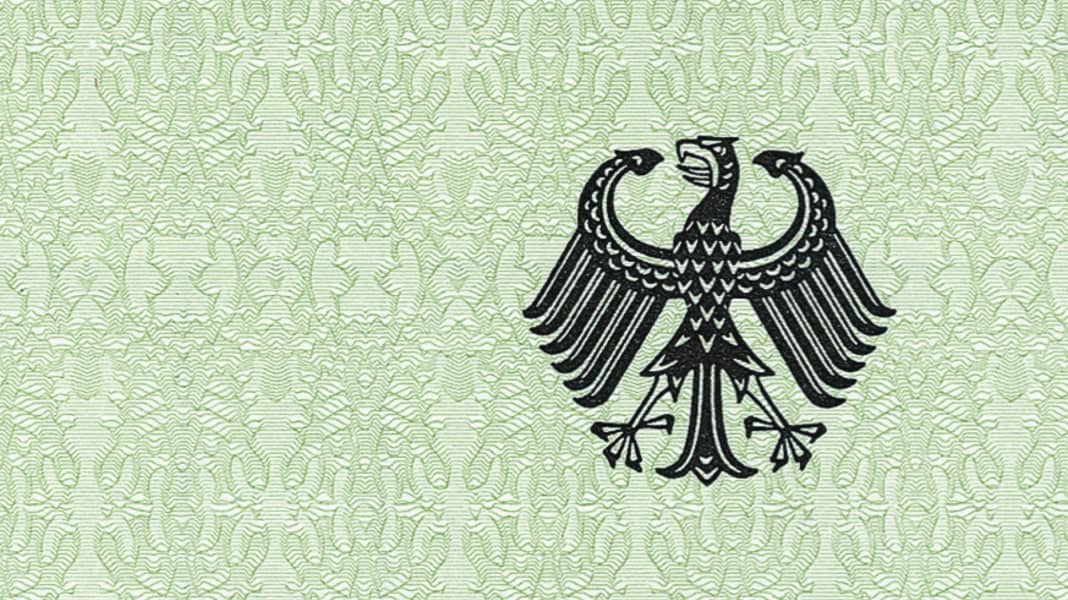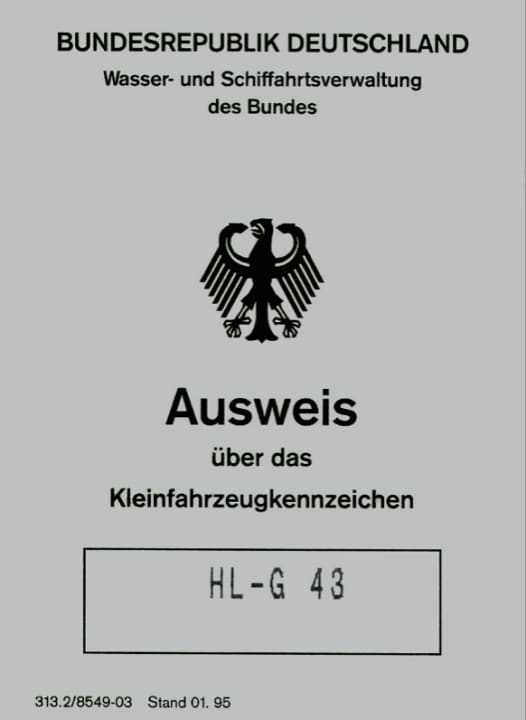
What boat papers are available?
The legislator distinguishes between official and officially recognised boat papers.
Official boat documents:
- Identification of the small vehicle licence plate
- Ship's letter
- Flag certificate
- Ship certificate
Officially recognised boat documents:
- International Boat Licence (IBS)
THE DOCUMENTS IN DETAIL:

Identification of the small vehicle licence plate
The number entered in the small craft licence, together with the identification letters of the water and shipping authority to which it is allocated, forms the official registration number. This document is issued by all water and shipping authorities in Germany on application. The licence and the registration number are valid indefinitely. Changes to the data entered in the licence must be reported to the issuing authority without delay. The allocation of this official licence plate including the issue of the ID card costs 18 euros, the entry of a change of ownership 15 euros, all other changes 10 euros, a replacement copy 13 euros.

Ship letter (inland vessels)
The licence plate resulting from this document consists of the ship's registration number shown in the ship's letter, followed by the identification letter "B". In addition, the name of the vessel and the home port or place of registration must be affixed to the boat. Only boats that are entered in an inland waterway register receive the ship's letter. Inland waterway vessels with a displacement of 10 m3 or more must be entered in the register of inland waterway vessels. Inland waterway vessels with a displacement of at least 5 m3 are eligible for registration.
The data and documents to be provided when registering an inland waterway vessel are specified in the "Schiffsregisterordnung" (BGBl I, 1994, p. 1134). These include the "calibration certificate", which is issued by the Central Ship Inspection Commission/Ship Calibration Office at the Waterways and Shipping Directorate Southwest after the boat has been calibrated (measured) (see: Regulation on the calibration of inland waterway vessels, BGBl. I, 1975, p. 1785). Inland vessel registers are kept at the local courts. The costs for entry in the inland waterway register depend on the value of the boat. There are also fees for issuing the ship's certificate.

Flag certificate
The official licence plate resulting from this document consists of the number shown in the flag certificate followed by the identification letter "F". In addition, the name of the home port at the stern and the ship's name must be displayed in clearly visible and fixed characters. The flag certificate is issued by the Federal Maritime and Hydrographic Agency (BSH) upon application for seagoing vessels whose hull length does not exceed 15 metres. As the documents to be submitted are very extensive, the information sheet "Notes on the application for a flag certificate" should be requested from the BSH before submitting the application. or downloaded from the Internet. The flag certificate is valid for eight years and costs 40 euros. After eight years, the document can be renewed for 25 euros. Amendments and replacement copies also cost 25 euros.

Ship certificate (seagoing vessels)
The licence plate resulting from this document consists of the ship's registration number shown in the ship's certificate. If available, the radio call sign (including distinguishing signal) can also be used as an official licence plate. In addition, the ship's name and home port must be affixed to the boat. The ship certificate is only issued to boats that are entered in the register of sea-going vessels. Sea-going vessels with a hull length of 15 metres or more must be entered in the register of sea-going vessels. Smaller boats can be entered in the register of sea-going vessels at the request of the owner.
The data to be provided when registering a seagoing vessel is set out in the "Ship Register Regulations" (BGBl I, 1994, p. 1134). This includes the "tonnage certificate", which is issued by the Federal Maritime and Hydrographic Agency (BSH) upon application for pleasure craft up to 24 metres in length. Shipping registers are kept at the local courts. The costs for entry in the shipping register depend on the value of the boat. There are also fees for issuing the ship certificate.

International Boat Licence (IBS)
The registration number resulting from this document consists of the number of the International Boat Certificate followed by the identification letter of the allocating organisation. The identification letter "M" stands for the German Motor Yacht Association (DMYV) the code letter "S" for the German Sailing Association (DSV) and the code letter "A" for the General German Automobile Club (ADAC).
In Germany, the International Boat Certificate is valid as an officially recognised registration document as long as the data entered remains unchanged. As a boat document for international use, the IBS may not be older than two years. It must therefore be renewed every two years for this use. Members pay 20 euros to "their" organisation for the reissue of an IBS. Non-members pay 25 euros. Renewals, extensions and amendments cost 18 euros.
There are therefore five different boat documents, from which every boat owner is free to choose the document of their choice - with two exceptions: An inland waterway vessel with a displacement of 10 m3 or more must be entered in the inland waterway vessel register, while a seagoing vessel with a length of 15 metres or more must be entered in the seagoing vessel register. This immediately raises the question of what is a sea-going vessel and what is an inland waterway vessel?

